Marine algae-based aquaculture can help with future nutritional demands and improve environmental sustainability
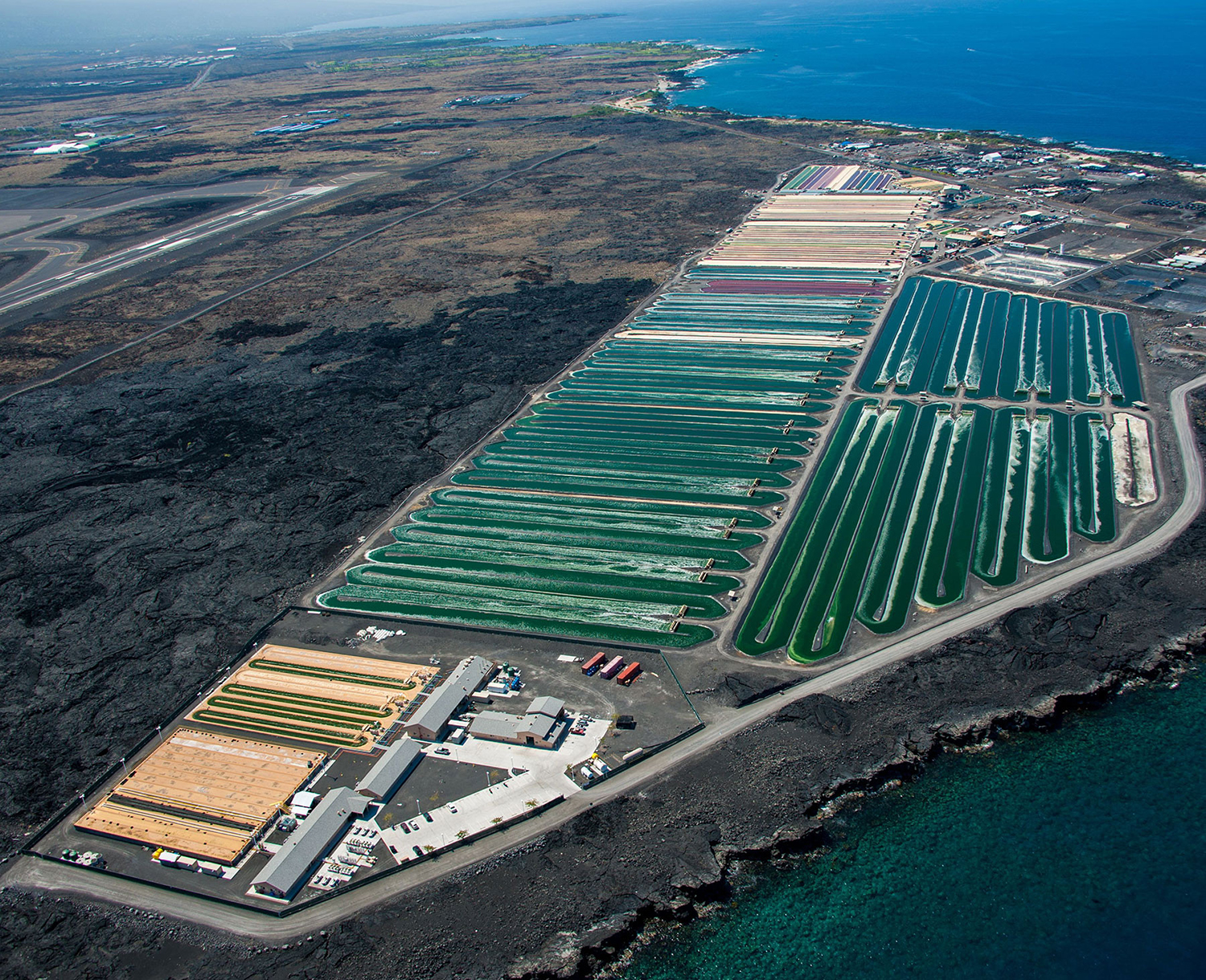
By 2050, the world’s population is projected to approach 10 billion people. It is projected that global food production will need to increase by up to 56 percent to meet the nutritional demands of this growing and increasingly affluent population. But even today’s food production is unsustainable and insufficient.
On land, agriculture provides the backbone of the global food production system; however, its benefits come at the expense of negative impacts on land use and carbon emissions (Fig. 1) as well as freshwater resources and biodiversity. If we look to the ocean for sources of nutrition, most wild-capture fisheries are already fully exploited or overexploited, and current marine aquaculture practices are insufficiently developed to close the gap between nutritional supply and demand. In addition, both often pose environmental and social justice problems comparable to those of terrestrial agriculture.

Currently, it is estimated that one-quarter of the world’s population is malnourished, with two billion people consuming diets deficient in micronutrients and over 800 million people unable to secure enough calories to meet their minimum daily energy requirements. Food distribution and waste are a significant part of the problem today; however, even improvements in those areas by 2050 will be inadequate to feed an additional three billion people, most of them populating developing countries. To secure an adequate food supply during the second half of the 21st century, society will need to significantly intensify the output of its food production system while simultaneously reducing its detrimental impacts on the global environment.
Given constraints on increasing agricultural output, many alternative food options are being explored to evaluate how society might sustainably intensify its food production system. Among marine “blue food” options, aquaculture has attracted much attention, primarily because the expansion of wild-capture fisheries will be unable to keep up with increasing demand. However, the expansion of marine aquaculture as it is currently practiced also has finite limits. Belton et al. argue that the potential to intensify global food production through marine shellfish and finfish aquaculture is much more limited than its advocates claim. These authors conclude that the future of aquaculture is in freshwater finfish and that society’s expectations of output from marine aquaculture sources should be lowered.
While Belton et al. highlight several important issues, we disagree with their primary conclusion on the limits of marine aquaculture. A recent review by Naylor et al. confirms the dominance of freshwater finfish production in the global aquaculture market: in 2017, it comprised 75 percent of the 112 metric tons of live-weight volume produced. However, during the 20 years since a previous review by Naylor et al., marine algae-based aquaculture has grown rapidly, having produced 32 metric tons in 2017, comparable to that of all aquaculture sectors in 1997 (34 metric tons).
This rapid growth, primarily in the form of macroalgae, highlights the great potential of marine algae-based aquaculture for further expansion. In addition, although there has been some commercial development of microalgae in small-scale nutraceutical and niche food markets, there has been limited penetration into food, animal feed, and aquafeed commodity markets. Based on recent research, we believe that there is considerable scope for growth in developing such microalgae-based nutritional commodity markets.
In this article – adapted and summarized from the original publication (Greene, C.H. et al. 2022. Transforming the future of marine aquaculture: A circular economy approach. Oceanography 35(2):26–34) – authors explore the hypothesis that marine algae-based aquaculture has the potential to close the projected gap in humanity’s future nutritional demands and can do so while simultaneously reducing the detrimental climate and other environmental impacts of the current food production system.
A circular-economy approach
In October 2020, the Ocean Visions Consortium established the Marine Circular Bioeconomy (MCB) Task Force to explore marine aquaculture’s potential for sustainably intensifying global food production. The MCB Task Force employs a circular economy approach that emphasizes reducing new resource extraction and increasing end-of-use processing and recycling. In contrast to the “take-make-waste” linear model, the circular economy model is regenerative by design and aims to decouple economic development from finite resource extraction.
Applied to marine aquaculture (Fig. 2), the circular economy approach allows tracking and quantification of energy inputs and the flows, recycling, and reuse of materials. It enables visualization of opportunities for reducing the consumption of new resources and, through recycling and reuse, the production of waste products. It also enables visualization of opportunities for combining processes in novel and more efficient ways to enhance the co-production of food and energy as well as the capture, storage and utilization of carbon dioxide.
A 21st-century challenge: Expanding the spatial extent and utilization of blue carbon
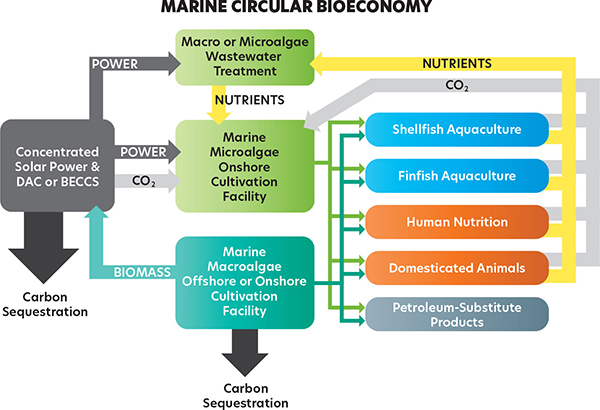
The ocean currently accounts for approximately half of Earth’s annual global primary production, ~50 gigatons of carbon per year. In contrast to terrestrial primary production, very little of this autotrophic blue carbon makes its way into the human food production system. Most of the ocean’s primary production is carried out by small planktonic algae in the open ocean, where productivity per unit area is relatively low and food chains are relatively long. Both factors set constraints on the potential contribution of open ocean ecosystems to human nutrition.
In contrast to the open ocean, coastal ocean ecosystems have much higher primary productivity per unit area and shorter food chains, especially in upwelling regions. These factors account for coastal ocean ecosystems providing a vast majority of the world’s wild-capture fisheries harvest. In addition, the coastal ocean is home to benthic macroalgae beds and kelp forests as well as mangrove, salt marsh and seagrass blue-carbon ecosystems. Despite their high productivity per unit area and large carbon storage capacity, these macroalgae and blue-carbon ecosystems occupy less than 1 percent of Earth’s surface area (Fig. 3). Therefore, although they contribute a large fraction of the primary production in nearshore coastal environments, these ecosystems make relatively small contributions to the ocean’s total annual primary production and carbon sequestration.
A primary challenge for marine algae-based aquaculture in the coming decades is to increase the amount of autotrophic blue carbon making its way into the human food production system. At present, most marine aquaculture is confined to the coastal ocean. Because the coastal ocean only makes up approximately 11 percent of Earth’s surface area (Fig. 3), this places a fundamental constraint on the potential contribution of present-day marine aquaculture to human nutrition. This potential contribution is further constrained by the many other human activities in the coastal ocean that reduce the spatial area available to marine aquaculture.
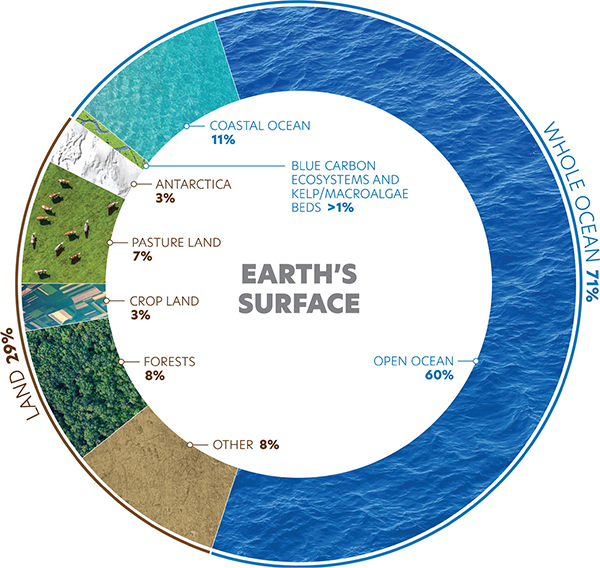
One solution to this challenge is to increase the spatial extent of marine algae-based aquaculture. This can be done by expanding the footprint of marine aquaculture facilities both onshore and further offshore. In comparison to onshore micro- and macroalgae cultivation, the technological development of aquaculture facilities further offshore, into deeper oceanic waters, is less mature.
The main challenge to constructing such facilities is the need for novel technologies that can withstand exposure to the greater hydrodynamic forces of the oceanic environment while not incurring capital and operational costs that are prohibitively expensive. Neither China, the global leader in marine macroalgae aquaculture, nor the European Union have made significant research and development investments in this area. Recent advances have been made in the United States through the ARPA-E Macroalgae Research Inspiring Novel Energy Resources (MARINER) program. Nevertheless, sustained research and development, including the assessment of potential environmental impacts by Boyd et al., will be required to make offshore oceanic aquaculture commercially viable and globally scalable.
Nutritional and sustainability advantages of marine microalgae-based aquaculture
In contrast to offshore oceanic aquaculture, there is a rich, 50-year history of developing aquaculture facilities onshore for the cultivation of both freshwater and marine microalgae. Although the focus of microalgae-based aquaculture was originally on the production of biofuels and nutraceuticals, research in the field has evolved more recently to investigate the potential of microalgae for producing animal and aquafeeds as well as food for direct human consumption.
Food production from marine microalgae cultivated in onshore aquaculture facilities offers several nutritional and environmental sustainability advantages relative to terrestrial agriculture. As a group composed of thousands of different, mostly unstudied species, marine microalgae represent a potentially large, untapped source of high-quality nutritional protein. Although the range is large, many species possess a protein content greater than 40 percent dry mass. In addition, relative to terrestrial plants, marine microalgae provide a better source of essential amino acids and other micronutrients, such as vitamins, antioxidants, omega-3 polyunsaturated fatty acids and minerals.
In terms of direct environmental sustainability advantages, microalgae exhibit primary production rates that are typically more than an order of magnitude greater than the most productive terrestrial crops. Thus, with regard to land use, the cultivation of marine microalgae in onshore aquaculture facilities has the potential to produce an equivalent amount of food from less than one-tenth of the land area. In addition, because marine microalgae do not require soil and irrigation, their cultivation does not need to compete with agriculture and other stakeholders for arable land and freshwater (Fig. 4). Lastly, because the cultivation of marine microalgae is very efficient in its use of nutrients, only losing those nutrients that are harvested in the desired products, the problems associated with excess fertilizer runoff and subsequent eutrophication of aquatic and marine ecosystems can be minimized.
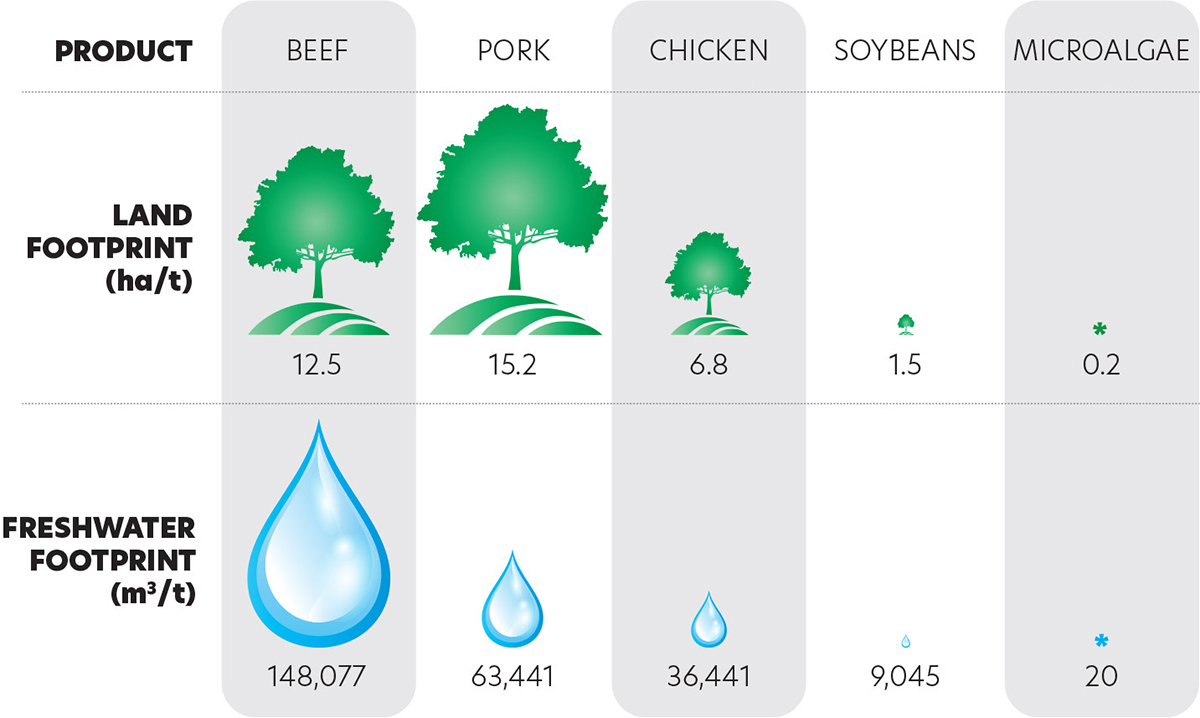
The potential for less direct environmental sustainability advantages should also be noted. By reducing agriculture’s demand for arable land, the cultivation of marine microalgae has the potential to markedly reduce greenhouse gas emissions and biodiversity loss. For example, over the past 50 years, approximately one-fifth of the Amazonian rainforest has been cleared, mostly for cattle pastureland and soy cropland. This deforestation has been so extensive that the Amazon has recently transitioned from being a globally important carbon sink to a net carbon source. In addition, there is growing concern that further interactions between deforestation and climate change may force the Amazonian rainforest to cross a tipping point that will jeopardize the greater than 120 Gt of carbon stored in its above- and below-ground biomass as well as its remarkable biodiversity.
Sustainability challenges for marine microalgae-based aquaculture
While the potential environmental sustainability advantages of marine microalgae-based aquaculture are great, the challenges of scaling it up globally are also significant. Although there are large areas of suitable land with proper topography and insolation available in the tropics and subtropics, cultivation facilities must be close enough to sources of seawater or brackish water to avoid excessive transport costs (Fig. 5).
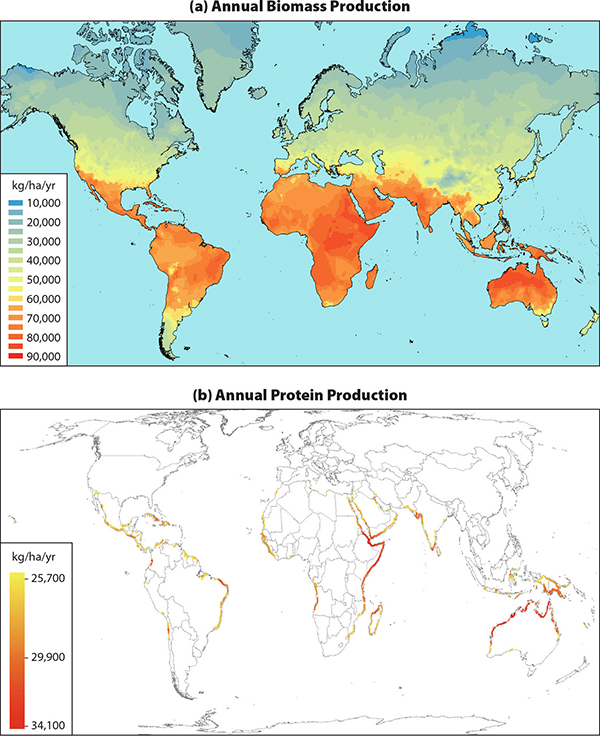
More challenging than finding suitable land is the requirement for carbon dioxide. When growing rapidly, microalgae take up carbon dioxide faster than it can diffuse across the air-water interface of open cultivation ponds. Carbon dioxide must be added to the ponds, and the costs of supplying this gas, both energetic and financial, must be kept low. Ideally, carbon dioxide should be produced on-site from non-fossil carbon sources. Several authors have suggested this could be achieved by integrating microalgae cultivation facilities with direct air capture or bioenergy with carbon capture and storage technologies. Current DAC approaches are prohibitively expensive for this purpose; however, integrating DAC with concentrated solar power or other emerging renewable energy technologies could provide a cost-effective approach for simultaneously generating power and capturing carbon dioxide.
Providing nutrients for cultivating marine microalgae on a global scale also presents a formidable challenge, especially regarding phosphorus. The scientific community has spent just over a decade trying to predict when global agriculture will become constrained by “peak phosphorus,” and microalgae cultivation will not be immune to such a constraint. In fact, the stoichiometric nutrient requirements for microalgae amplify this phosphorus challenge. Fortunately, the efficiency of nutrient use mentioned previously (i.e., no fertilizer runoff) combined with the potential for nutrient recycling through algae-based wastewater treatment make the challenge less daunting. Recovering and reusing phosphorus from waste streams is the kind of challenge that the circular economy approach is well positioned to tackle.
Perspectives
Our global analysis of coastal areas suitable for marine microalgae-based aquaculture reveals that, even with conservative assumptions, this untapped sector of the global food production system has the potential to provide greater than 100 percent of global protein demand for 2050. However, all areas of the world are not created equal when it comes to the geophysical requirement for cultivating marine microalgae (Fig. 5). Our analysis reveals that much of this sector’s potential lies in the global south. While vast continental areas of Eurasia and North America have traditionally been viewed as society’s global breadbaskets, marine microalgae-based aquaculture provides an opportunity to better balance food production between the two socioeconomic hemispheres.
Geophysical considerations are necessary, but they are not sufficient to ensure the expansion of marine microalgae-based aquaculture in the global south. Financial considerations must also be weighed. Fortunately, land and labor costs are relatively inexpensive in the global south, and they will provide further incentives for development. Perhaps the most important financial incentive, however, is the Green Climate Fund. Formally adopted during the 2011 United Nations Climate Change Conference (COP 17) in Durban, South Africa, the Green Climate Fund was originally conceived as a mechanism for wealthier countries to assist developing countries in their efforts to mitigate and adapt to the effects of climate change.
Implementation of the Green Climate Fund has been difficult because the incentives for wealthier countries to contribute have been modest, especially regarding adaptation measures. However, marine microalgae-based aquaculture can offer mutually beneficial investment opportunities for both wealthy and developing countries by providing climate mitigation while simultaneously enhancing global food and water security.
Now that you've reached the end of the article ...
… please consider supporting GSA’s mission to advance responsible seafood practices through education, advocacy and third-party assurances. The Advocate aims to document the evolution of responsible seafood practices and share the expansive knowledge of our vast network of contributors.
By becoming a Global Seafood Alliance member, you’re ensuring that all of the pre-competitive work we do through member benefits, resources and events can continue. Individual membership costs just $50 a year.
Not a GSA member? Join us.
Author
-
Charles H. Greene, Ph.D.
Corresponding author
Professor Emeritus
Department of Earth & Atmospheric, Sciences, Cornell University, Ithaca, NY, USA; and
Senior Research Fellow, Friday Harbor Laboratories, University of Washington, Friday Harbor, Wash., USA[117,100,101,46,108,108,101,110,114,111,99,64,50,103,104,99]
Tagged With
Related Posts
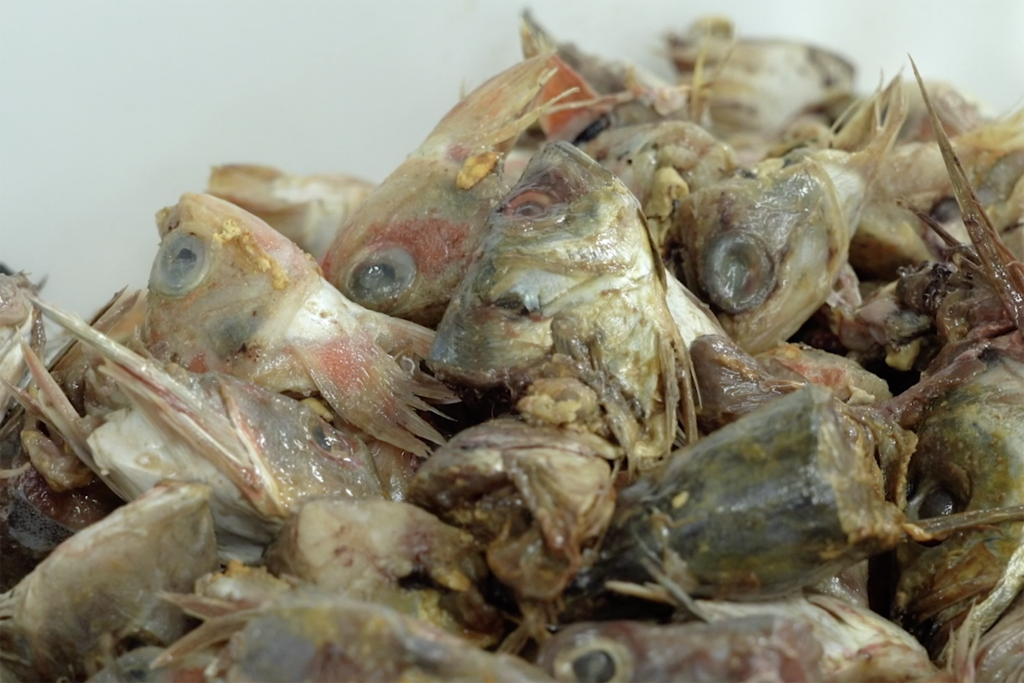
Responsibility
An introduction to circular economy principles in aquaculture
In the latest article from the GAIN project, implementing circular economy principles can help increase the sustainability of aquaculture production.
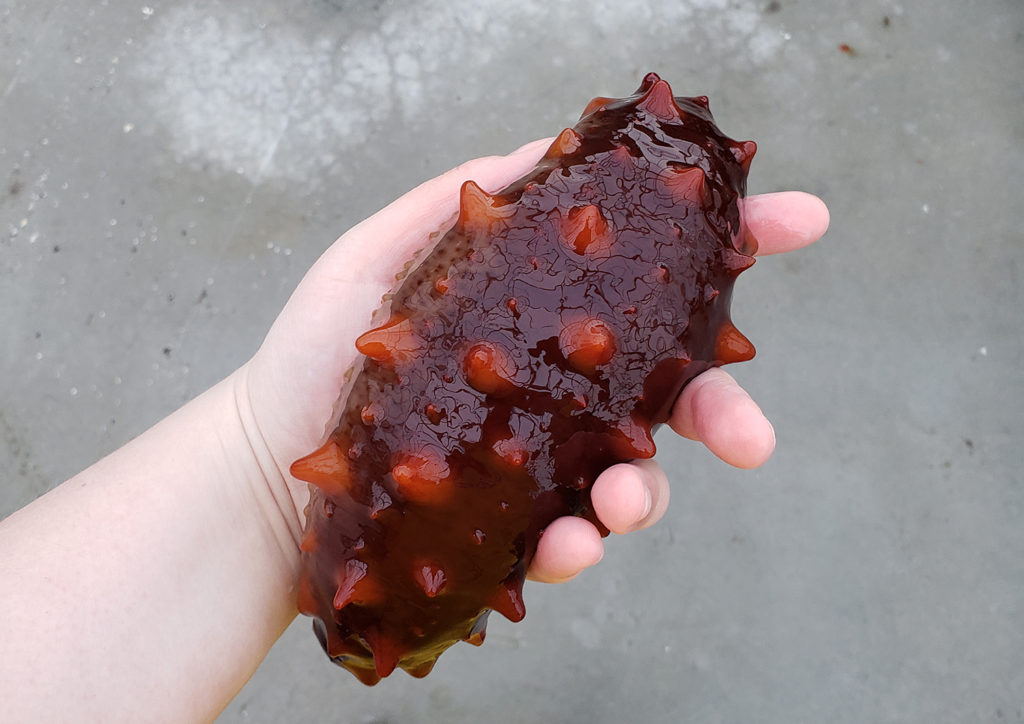
Responsibility
A fresh focus on sea cucumbers – nature’s recyclers
Researchers in Scotland, Sweden and Canada are exploring the potential of sea cucumbers, the squishy detritivores that can help clean up behind fish pens.
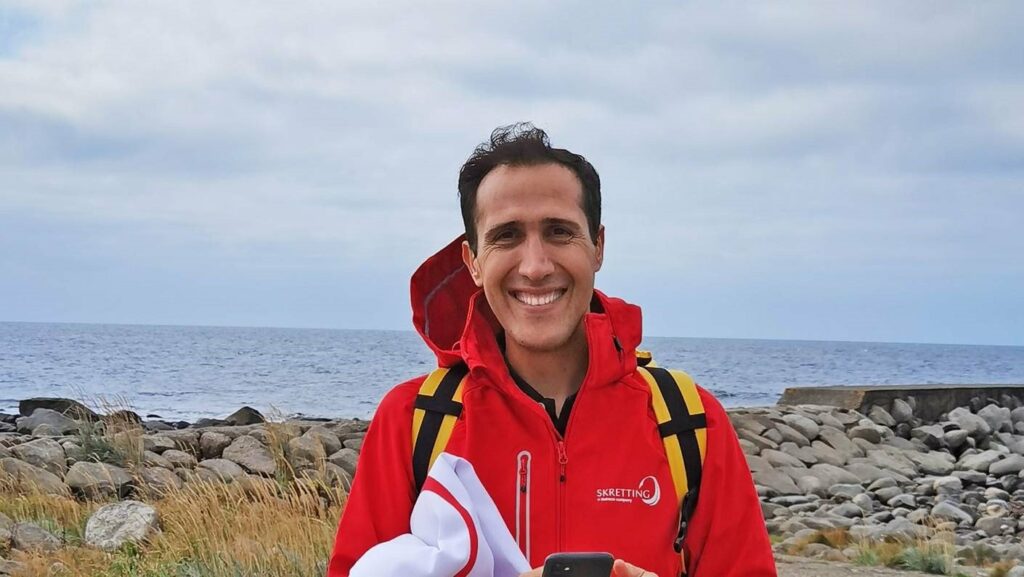
Responsibility
‘Do more and do better’ – Sustainability manager discusses Skretting’s ambitious agenda
Aquafeed giant Skretting recently appointed Jorge Diaz as its sustainability manager to advance its ambitious sustainability agenda.
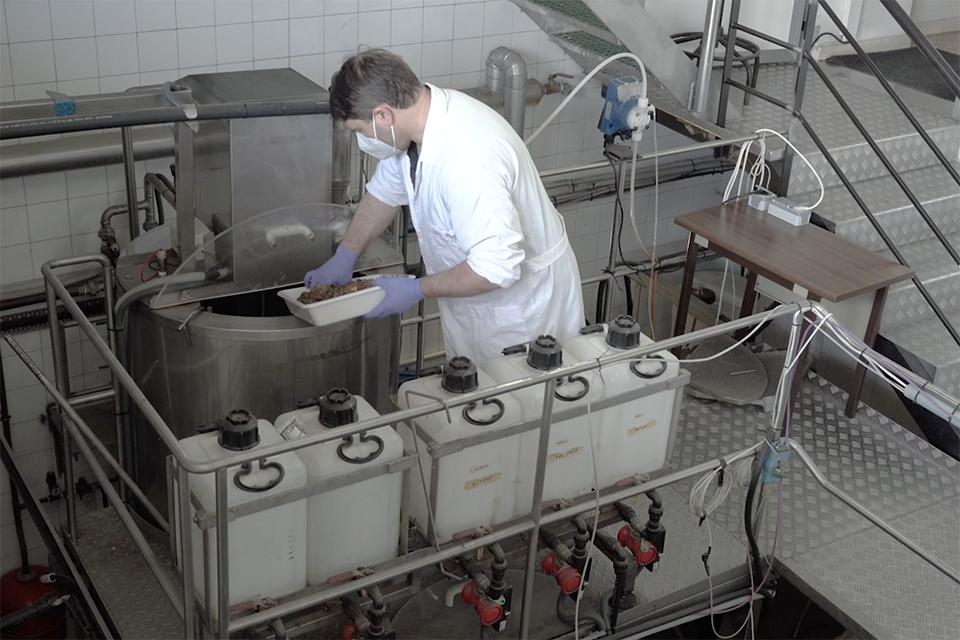
Responsibility
Circular economy: Hydrolysates of aquaculture byproducts as feed
In the latest GAIN article, fish scraps can be transformed into fish protein hydrolysates as a high-nutrient value addition to aquafeeds.



